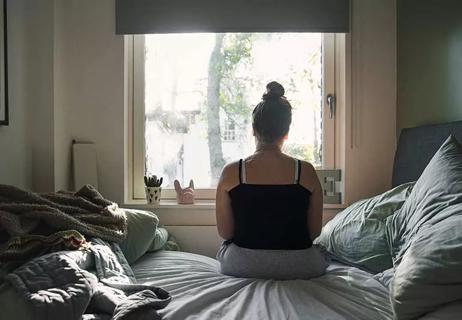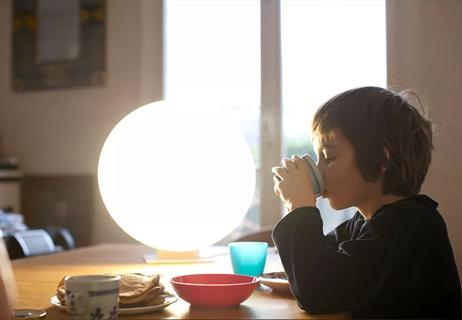Cozying up with friends and family can make cold, dark days more meaningful

Geography is wild. Did you know the city of Oslo, Norway, only gets about six hours of sunlight each day in the month of December? Even harder to imagine: The sparsely populated northernmost region of Norway doesn’t see sunlight at all from November 20 to January 22.
Advertisement
Cleveland Clinic is a non-profit academic medical center. Advertising on our site helps support our mission. We do not endorse non-Cleveland Clinic products or services. Policy
How depressing is that?
Not really depressing at all, it seems. In fact, Norway and other Nordic countries (like Sweden, Finland and Denmark) consistently rank as the happiest countries in the world.
Now, happiness is complicated, and we can’t assume that (a) all Norwegians are happy, or (b) that sunless seasons have anything to do with it one way or the other.
What we can assume is that, at the level of society and culture, Norwegians have figured out how to adapt to the cold and the darkness. We can also conclude that the wisdom they can offer us is valuable — especially for those of us who are surgically attached to light-therapy lamps every winter.
Every little bit helps, right?
If you want to understand winter in Norway, you have to understand the concept of “koselig.” The rough translation of koselig is “coziness,” but it’s much more complex than that. While there isn’t an English equivalent, other countries have parallel words, like the Danish “hygge,” the Swedish “mys” and the Dutch “gezelligheid.”
We’ll walk you through the different components of koselig, and — with the help of clinical psychologist Dawn Potter, PsyD — show you why a Scandinavian-style commitment to “cozy” might be just the thing you need to make this winter season a little less oppressive.
Advertisement
Let’s start at the beginning. Koselig (pronounced “koosh-lee”) is an adjective — the verb form of which is kose. It’s not a thing so much as a vibe — or a series of actions that enable said vibe.
It’s all about creating warmth from within.
Think roaring fires and chunky blankets. Steaming-hot coffee and good friends to drink it with. Walking your dogs across a vista of snow-covered trees. Koselig is about the simple pleasure of sharing comfortable surroundings with the people you care about — celebrating what winter is, instead of longing for all the things it isn’t.
Could embracing koselig be the thing that gets you past your winter blues? Let’s find out!
While few non-Norwegian Americans are familiar with koselig, many of us have heard of the Danish concept of hygge (pronounced “hoo-gah”).
The pop culture gods presented hygge to us in 2016 as a way to recover our minds and restore our spirits. They created books and board games, fashion lines and furniture. Living “the hygge lifestyle,” they told us, would insulate us from both the cruelties of life and those cold winter nights.
While most of us wouldn’t describe the last half decade as particularly hygge, it is fair to say that we talk more about comfort and self-care now than we ever used to. Perhaps that’s why we’re now adding koselig into the mix.
While hygge and koselig are similar concepts, there are two key differences that are worth noting:
Thanks to COVID-19, the hygge-esque tendency toward being alone feels less like a paradise these days and more like … well, quarantine.
The urge to make merry with friends and family — to go places and do things — is extra strong right now, which makes run-of-the-mill winter blues feel all the more frustrating.
As sunset gets earlier and the temperatures drop, you may find yourself feeling a little down. It’s not an unusual response to the changing seasons, but that doesn’t mean you have to accept it.
Advertisement
Now that we know what koselig is, let’s explore some ways tapping into it can help you stay jolly this winter.
Most of us prefer to stay warm and cozy in bed on cold, dark days. So why is it that winter is such a family-focused time?
“A lot of different cultures have traditions or holidays in the winter that emphasize togetherness. And I don’t think that’s an accident,” Dr. Potter says.
It takes genuine effort to get together during the winter, but that also makes the gatherings we do have all the more special. Having things you look forward to doing, and people you look forward to seeing, is a vital component of koselig. Keeping your calendar full will help you resist the urge to hibernate.
Not the holiday party type? Not to worry. A small, intimate gathering of old friends can be koselig. A Zoom chat with an old friend can be koselig. A book club meeting can be koselig. A quiet afternoon folding laundry with your partner and your favorite playlist can be koselig, too.
Koselig isn’t just about what you do, it’s also about how you think.
In the United States, we talk about the weather all the time. Good or bad, it’s our go-to silence filler.
In Scandinavian countries, complaining about the weather doesn’t happen as much. It’s a small cultural difference that can make a big impact on one’s mindset.
Advertisement
The next time you feel a complaint about the weather welling up inside of you, take a beat and reframe it. Instead of talking about the various and sundry body parts that are “freezing off,” talk about how warm your socks are, how much you’re going to enjoy that next piping hot cup of tea or how much your dog loves playing in the snow.
You can’t change the weather, so you might as well enjoy it.
Dr. Potter says that the wintertime blues her patients experience often have less to do with the climate and more to do with comparison.
“People feel like everybody else is having this warm, cozy holiday and they’re outside in the cold, looking in,” she says. “There’s a sense that everybody else is having a great time — having all these loving experiences — and they’re not.”
While the holiday season can be joyful, it can also raise our expectations to unrealistic heights —especially in the era of social media.
“During this time of year, you’re going to see a lot of people self-promoting,” Dr. Potter states. “They’re posting the great things they cooked and the happy, smiling family photos … and that’s great. Except for when you’re not feeling good. Then, you see those posts differently. You see them not as your friends being grateful for what they have, but as showing off all the things that you lack.”
Advertisement
Not everybody is part of a big, happy family — and even those who are don’t have an entirely stress-free holiday. Dr. Potter reminds us that there’s always more going on underneath the surface.
When you see other people’s koselig photos, try to remember that all is not always as it seems. For every perfectly decorated bûche de Noël, there’s a horribly burnt turkey stinking up a garbage can. For every photo of a beautiful family clad in matching plaid pajamas, there’s a weird uncle, a recent loss and a bad case of norovirus. Tis. The. Season.
And don’t forget: Not all happiness translates to Instagram, and that’s OK. Koselig is about celebrating the season in a way that brings you warmth — not followers.
It’s not unusual for folks living in colder climates to become less active during the winter, but slowing down is a bad move.
Remember, exercise isn’t just good for you: It’s also a recommended treatment for depression. When we hibernate all winter long, we’re missing out on a natural — and potent — medicine.
Dr. Potter recommends approaching the winter season with a mind toward staying active and fit.
“Plan ahead and figure out other ways to get physical activity and sunshine in your life,” she says.
If you really want to live the koselig lifestyle, make exercise an outdoor, group activity. Ice skating, hiking, skiing, sledding, attacking your buddies with snowballs — there are lots of ways to break a sweat when it’s freezing cold.
Unlike hygge, koselig is all about going outside and enjoying nature. While it may be cold and dark, the winter is also beautiful and — in many places — bug-free. So think of ways to be outside that celebrate the season.
Make a snowman with your children. Have friends over for a bonfire. Walk through the neighborhood to check out your neighbors’ decorations.
Don’t like any of those ideas? Well, tis the season to help others! Go outside and shovel a neighbor’s walkway. Volunteer to walk the dogs at your local animal shelter. If you absolutely can’t stand the cold, consider driving for an organization like Meals on Wheels.
Nothing warms from within quite like doing a good deed.
If you’re feeling low, consider adding a few bits of décor that give you that warm and cozy feeling.
Keep in mind, you don’t have to make it look like Norway threw up in your living room to get the koselig aesthetic because koselig is a feeling, not a design. A scented candle, an extra-soft throw blanket and yellow-toned lightbulbs might be all you need to transform your home into your version of a Scandinavian sanctuary.
Trying to avoid spending money? No problem! Stream music that gives you the warm fuzzies. Use your favorite coffee cup all the time, just because you can. Grab some pinecones from outside, stick ‘em in a decorative bowl, and call it art!
Koselig is priceless and made to be shared.
The holiday season can be a stressful one when it comes to food. Whether you’re trying to perfect a new cooking technique, staying on the diet your doctor prescribed, or satisfying your sister-in-law’s latest culinary whim, there’s a lot to think about — and even more to do.
But it doesn’t have to be that way. Food can be koselig, too. Keep it simple, and share it with the people you care about.
Comfort food is specific to your culture, so only you can know for sure what it means to make your kitchen koselig. But here’s a tip: You can’t go wrong with a warm beverage!
And remember, a koselig kitchen can be as healthy (or unhealthy) as you make it. The key is to keep things simple. Sure, koselig could be apple pie a la mode, but it could just as easily be a tray of apple slices, almonds and a slice of sharp cheddar cheese.
Koselig is an interesting way of framing the winter season, and it could help you get through the cold, dark days, but it’s a vibe … not a treatment.
Whatever the season, if you’re experiencing depression, it’s important to address it like you would any other medical condition and talk to a doctor about it.
The winter blues are common, so how do you know when it’s more serious than that? When it’s time to get professional help?
Seasonal affective disorder (SAD) is perhaps best understood as a pattern that some people with major depressive disorder experience. In other words, it’s unusual to be diagnosed with SAD without also being diagnosed with depression.
For that reason, the signs and symptoms to look out for are probably somewhat familiar:
Maybe these symptoms sound familiar, and maybe they don’t. Regardless, Dr. Potter says that the principles behind koselig — togetherness, comfort and a positive mindset — are worth keeping in mind.
“It’s really, really helpful to try to make meaning out of the season, the holidays and your life in general — to do things that are special for you,” she says.
Whether you call it koselig or not, Dr. Potter encourages you to find — and celebrate — the people and things that give you the warm fuzzies.
“Make plans,” she says. “Drink that peppermint latte if you want to. Get the scented candles. Light the fire in your fireplace. Do things that give the winter season meaning for you — and don’t fall into the trap of feeling like you’re on the outside looking in on other people’s perfect lives.”
Learn more about our editorial process.
Advertisement

If you experience warm weather seasonal depression, you’re not alone

An expert explains how seasonal weather changes affect our health

We shine a light on how light therapy can improve your mood

Helpful tips to ward off the winter blues

Light therapy can boost sleep and help fight depression

Plus, helpful tips for managing SAD during these challenging times

A distressed skin barrier can lead to red, itchy and scaly skin

If the flakes are undisturbed, pristine white and come from the top layer, it’s typically safe to indulge in a scoop

Type 2 diabetes isn’t inevitable with these dietary changes

Applying a hot or cold compress can help with pain